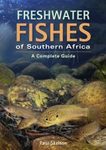About this book
As a group, the fishes of the family Siganidae occur throughout the tropical and subtropical Indo-Pacific region except for the Hawaiian Islands and Easter Island. These fishes are of moderate size, most adults being in the 20-30 cm range in standard length; most are herbivorous and, in general, occur in shallow waters. They are unique among fishes in having pelvic fins with 2 strong spines separated by 3 soft rays; these spines, the 13 of the dorsal fin, and the 7 of the anal fin are venomous. The family consists of a single genus, Siganus, and 2 subgenera, Siganus and Lo, the latter characterized chiefly by a tubulate snout.
The subgenus Siganus contains the following 22 species; S. corallinus (East Africa to Central Pacific), its sibling S. trispilos (northwestern Australia), S. luridus (Red Sea, Persian Gulf, and East Africa; populations within these 3 areas with distinctive features; has invaded the Mediterranean Sea via the Suez Canal), its sibling S. spinus (India to Society Islands), S. argenteus (Red Sea and East Africa to Pitcairn Island), S. rivulatus (Red Sea; also established in the Mediterranean); S. sutor (East Africa), S. canaliculatus (Persian Gulf to Indo-Malayan region), S. fuscescens (Indo-Malayan region and western Pacific; latitudinal range exceptional, northern Honshu to southern New South Wales; closely related to the previous 2 species), S. puellus (Indo-Malayan region and western Pacific), its sibling S. puelloides (Andaman Sea and Maldives), S. javus (Persian Gulf to southwestern Pacific), S. punctatissimus (Ryukyu Islands to northern Australia), S. punctatus (Indo-Malayan region to western Pacific), its sibling S. stellatus (northeastern coast of peninsular Malaysia to East Africa, with a subspecies in the Red Sea), S. doliatus (northem Australia to western Pacific), its sibling S. virgatus (central Indian Ocean and Indo-Malayan region to Ryukyu Islands), S. lineatus (Laccadive and Maldive Islands–southern India and northern Australia–western Pacific), its sibling S. guttatus (southeast Asia and Indonesia to Ryukyu Islands), S. vermiculatus (India to western Pacific; the only truly estuarine species), its sibling S. randalli, n. sp. (Papua New Guinea to eastern Caroline Islands), and S. labyrinthodes (Indonesia).
The subgenus Lo contains the following 5 species: S. magnificus (Andaman Sea), S. vulpinus (Indo-Malayan region to western Pacific), its sibling S. unimaculatus (antiequatorial distribution, Ryukyu Islands to northern Philippines and North West Shelf of Australia). S. uspi (Fiji. and rarely at New Caledonia). and S. niger, n. sp. (Tonga).
S. corallinus, S. trispilos, S. puellus, S. puelloides, S. doliatus, S. virgatus, S. punctatus, S. stellatus, S. punctatissimnus, and the species of the subgenus Lo school when young but live in pairs thereafter. The remaining 13 species schools throughout life.
Customer Reviews







































